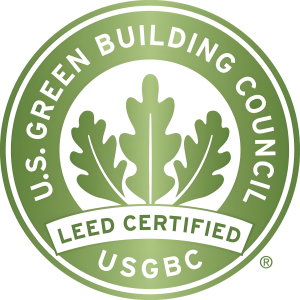LEED is leading the way for smart buildings
CommScope is a global leader in network infrastructure for buildings, data centers and service provider networks. My role at CommScope is in strategy and technology for buildings and campuses, which includes understanding the impacts of macro trends on our customers, anticipating market needs, and then translating that into solutions and services.
The current macro trends we are studying are densification of our urban centers, pervasive automation and sustainability. These macro trends are what’s driving the need for smart buildings. They are the “why” for smart buildings. We need more smart sustainable built spaces that are in harmony with our environment and communities, that make the occupants lives better, healthier and safer. Our built spaces also need to be more inclusive, supporting more diverse workforces and community members, connecting people with people, and connecting people with systems and resources.
Smart buildings aren’t the goal, they are the vehicle that helps us reach our global imperative: more sustainable communities. USGBC’s collaboration with the smart building industry is timely and demonstrates its continued leadership in the design, construction and operation of environmentally and socially responsible spaces.
There are several smart building rating systems that exist, and they are useful for understanding the specific technology attributes of a building, but we have not seen significant adoption of smart building rating systems. One reason for low adoption may be the ambiguity around the term “smart building.” What is a smart building, and what does it mean to stakeholders if their building meets a specific smart building rating?
The industry has coalesced around some concepts, but falls short in a precise definition, which makes measurement systems difficult to characterize. Generally expressed, a smart building collects data from multiple systems and devices and shares that information so that action can be taken to improve business process, operational efficiency, sustainability, health and occupant safety, and user experience.
There are countless ways to attain these outcomes and varying degrees of importance attached to each of these outcomes for the stakeholders. If your building is “smart,” it has the infrastructure in place to support the systems and devices you deploy to get access to the type of data you need, and then to take action to have a positive impact on business process, operational efficiency, sustainability, health and occupant safety, and user experience. Rating a building for “smartness” based on whether it has a specific system is limiting, because a system may be germane to one business type or stakeholder and not important to another. it may also be relevant for a single snapshot in time and not later. A more effective way to measure the smartness of a building is to measure the buildings’ ability to support interoperability and sustain itself through technology adoption and evolution.
USGBC’s LEED program is the most widely adopted building certification program. The LEED framework allows for new experience, new stakeholders, and new science and technology to be incorporated into the program to ensure the program stays relevant and meets the evolving needs of our communities. Technology and automation can support more sustainable buildings, but it’s not a given. Technology and its supportive infrastructure have a carbon footprint. The methodology, architecture and its interoperability all need to be considered when applying sustainability benefits to a technology.
One of the most common design, construction and maintenance practices seen within operational technology is siloed systems that are built and managed individually with their own infrastructure and with minimal upfront consideration to interoperability and shared infrastructure. There is industry focus on software interoperability for smart buildings, and this is critical, but there is a great deal of duplicate physical infrastructure that is designed, installed and maintained that could be reduced with proper planning early in the design of a project. The LEED system requires the design charrette, sets the project expectations and compels early collaboration across the building stakeholders; this approach would be immensely helpful in defining technology systems and their infrastructure for smart buildings.
https://www.energycostsolutionsgroup.com/wp-admin/post.php?post=5624&action=elementor



